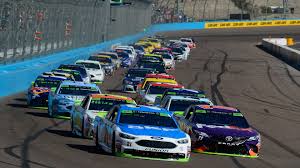Everything new on the Nascar vehicles racing in Daytona this weekend
The most visible shift is the movement of the cars’ numbers from their traditional spot on the doors toward the fenders. Clearing space on the doors for the all-important sponsor logos. But look closer and you’ll notice that these cars are now more readily identifiable as the Mustang, Camaro, and Camry street cars they impersonate. No more amorphous teardrop-shaped vehicles that bear little resemblance to the street cars they purport to represent nascar.

Those cars were shaped the way they were for good reason: Aerodynamics dictate success in high-speed racing like Nascar. And the only way to give all brands a fair chance to win was to make the cars look essentially indistinguishable.
But for this season’s debut of the so-called “Next Gen” race car. Nascar is making wholesale changes, not only to the cars, but to the very philosophy underpinning the Nascar Cup series. Until now, the thinking was that if you could design and build a car within the existing rules. That was better than other teams’ cars, then you’d reap the benefits of your creation and win races.
Nascar Details
But the arrival of smart engineers and computer-aided design tools has led to a costly race for infinitesimal gains, and Nascar decided that that approach was not financially viable for the long-term success of the series.
Starting this season, the Next Gen car is instead an assemblage of purchased off-the-shelf parts. These parts cost the same for everyone, and expensive development of them isn’t allowed. So these kit cars should deliver nearly identical performance. This should, in theory, help lower-budget teams be more competitive for wins.
It starts with a car’s chassis. Until this year, teams built their own chassis (the frame and suspension), or low-budget teams might have bought a used chassis from bigger-budget teams. Now, everyone gets theirs from Michigan’s Technique Chassis, LLC.
The frames were welded together with continuous steel tubes that ran from the front to the back. Repairing one of these after a crash meant cutting the bent tubes out and welding in new ones. The new chassis is modular, with a center section housing the driver that has bolt-on mounts for front and rear sub-sections that contain the suspension and brakes. Crash one of these cars, and the repair could be as simple as unbolting the bent sub-section and bolting on a new one.











